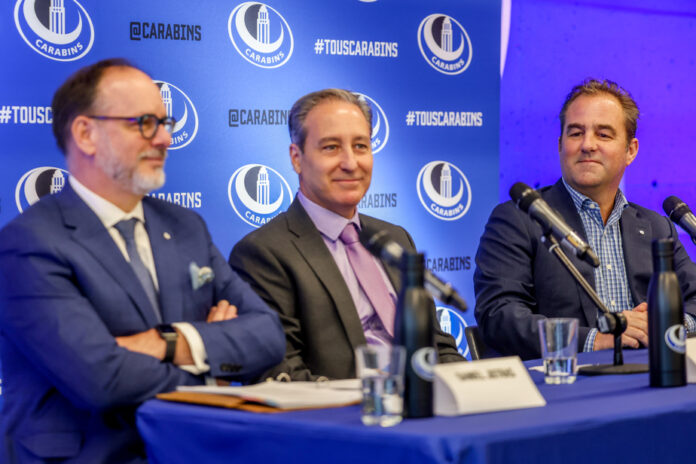A Quebecer who wishes to play football during his university studies will find interesting options here. Ditto in hockey, soccer, rugby and many other sports. However, it is less obvious in tennis, where many of them go into exile in the United States.
It is this exodus that the Carabins of the University of Montreal want to put an end to, and thanks to a generous donor, they will be able to give themselves the means to retain the athletes here.
The Le Blanc Family Foundation announced on Wednesday a $1 million donation to the Carabins tennis program. The effects of the donation are already very noticeable since the establishment confirmed at the same time the hiring of the very first full-time coach of the tennis program: David Desrochers, himself a former Carabin who was a physical education teacher. at the Marguerite-Bourgeoys school board.
“It’s already started, he’s already on the payroll!” », launched, enthusiastic, Manon Simard, general manager of the CEPSUM and the Carabins. It must be said that the crowded room of the CEPSUM had enough to arouse his enthusiasm. In addition to the Carabins environmental speakers, a large media contingent was on hand, particularly attracted by the presence of Geoff Molson in his capacity as President of the Carabins Governors Club.
Philippe has two children, and his son Christophe went to play at Kenyon College, in Ohio. Sébastien has four children, and two of them opted for tennis in the American university ranks: Raphaelle in Portland, Oregon, and Alexandre in Kentucky.
“If we had had them later, they might have made different choices,” says Philippe Le Blanc, partner, chairman and chief investment officer of Cote 100 and vice-president of the Le Family Foundation. White.
“That’s what we want in the future. May our young people here see that playing for the Carabins or Laval University is an accomplishment. It’s not that it’s not right now, but they all dream of going to play in the United States. »
This exodus of Quebec talent in the NCAA is difficult to quantify with precision. Alexis Galarneau (North Carolina State) and Gabriel Diallo (Kentucky) have been talked about in recent years by landing in the professional ranks, but the phenomenon is broader. According to the most recent data from Tennis Canada, there are about ten Quebecers in the NCAA in the men’s and women’s top 100 in singles, as well as in the top 50 in teams.
That said, Le Blanc assures that the goal is not to train a new cohort of professional players.
“The vast majority of them are student-athletes that we want to develop,” he said. It’s not impossible that an athlete or two will stand out and play for the pros afterwards. If we improve the program, maybe there will be some who will stand out. But at first glance, that’s not the goal. »
It’s more a matter of retention for the company, argues Le Blanc. “It’s a shame, it’s a loss. We invest in a young person in tennis or in school, for years, and then he leaves and does not always come back. That’s okay, but it’s not ideal. »
This is also what Daniel Jutras, rector of the University of Montreal, is aiming for, speaking of a “pressing need”. “Many talented young people quit tennis when they go to college, or go to an American university and settle there. Retaining talent will impact the vitality of tennis here. We will retain future leaders who will shine in sport and beyond. »















